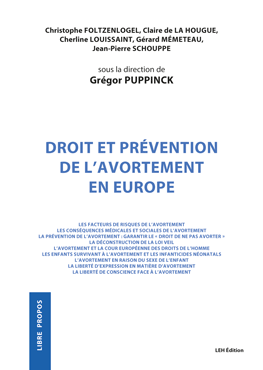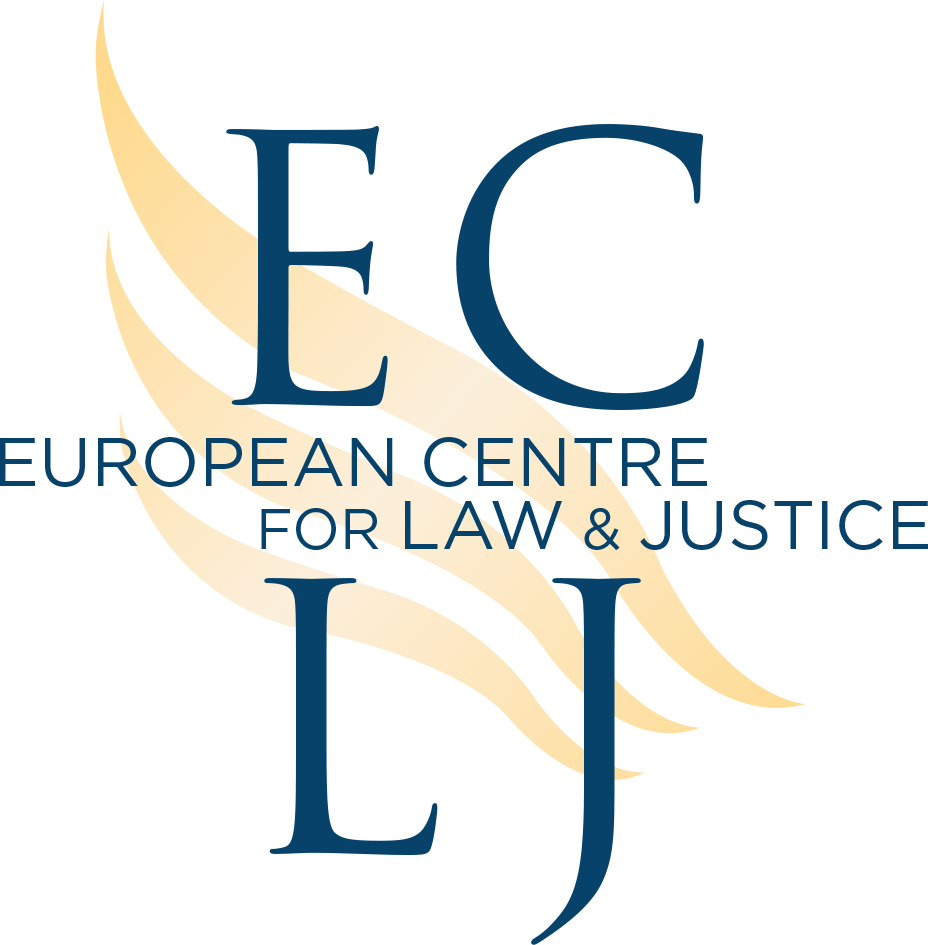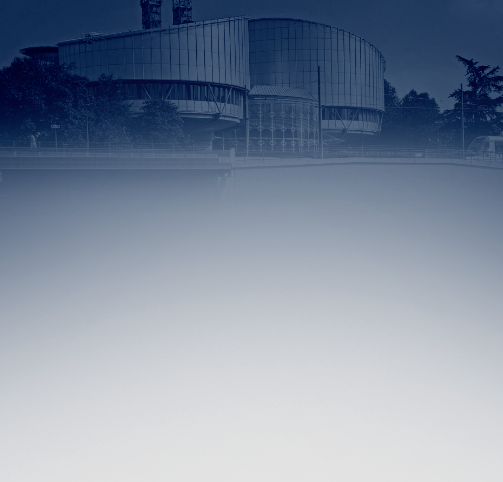Defending her bill before the National Assembly on 26 November 1974, Simone Veil explained that “The Government has set a triple objective: to make a law applicable in reality; to make a dissuasive law; to make a protective law.”[1] Indeed, for her, a law recognising abortion was necessary because the previous law was “overtly flouted, even worse, ridiculed”[2], and this called into question the authority of the State. However, in her opinion, abortion remained a necessary evil that needed to be, in some cases, “avoided at all cost”.[3]
“No woman happily resorts to abortion. Just listen to women. It has always been a tragedy and it will remain a tragedy. Therefore, though this Bill takes into account the existing facts of situation, though it accepts the possibility of an abortion, the ultimate objective is to control it and, where possible, to dissuade women.”
Thus, dissuasion, i.e. the prevention of abortion, was key in the Bill which provided for “various forms of counselling to enable [the woman] to weigh the gravity of the choice she was about to make”.[4]
In the Voluntary Interruption of Pregnancy Act (hereinafter the “Veil Law”), adopted on 17 January 1975, doctors were responsible for dissuading and counselling women. It was incumbent on doctors, in particular, to inform women about the impacts of abortion and contraception. This was followed by social counselling aimed to inform the women about available assistance, the possibility to give the child up for adoption, and also to enable women to express their distress.
The need to dissuade was recurrent in Simone Veil's speech, as the third objective of the Bill was to protect women. The procedure set out by the Veil Law was intended to empower women, who were solely responsible for their actions because the Government considered this the most dissuasive solution. The recurrent purpose of the law was to affirm the uniqueness of abortion:
“I say unequivocally that abortion should remain an exception, the last resort for hopeless situations.”[5]
It is very interesting to note that almost all the parliamentarians who spoke in support of the law shared the same point of view regardless of their political affiliation. The Gaullist, Hélène Missoffe stated that “Abortion is a failure, a trauma, an evil that everyone wants to see reduced”[6], while Jacques-Antoine Gau, who spoke on behalf of the Socialists and radical left, said:
“Ladies and gentlemen, no member of this assembly is ignorant of the fact that abortion is always, for the women who resort to it, a failure and often a personal tragedy. We all know it is a real social problem and that it poses a serious threat to public health looking at the conditions in which it is practised today.
Therefore, our responsibility is clear.
We should not consider ourselves anti- or pro-abortion. Who indeed could claim to be in favour of abortion?
We all have to work together to find a solution that is as humane as possible, that is to say, one that creates, for women resigned to this ultimate remedy, the moral, medical and material conditions, enabling them to interrupt their pregnancy without having to bear the consequences anymore.”[7]
Similarly, the Communist, Jacqueline CHONAVEL said that “abortion, whether illegal or not, is an evil that should disappear one day”[8], while Jacqueline Thome Patenôtre (radical left movement) said: “I find it necessary to emphasise straightaway that, should the repeal of the 1920 law and the text before us be passed tomorrow, none of us will be in favour of abortion, which must remain a last and exceptional resort.”[9]
Even the few people in support of the “fundamental right of women to assume their own responsibility”, like Yves le Foll, acknowledged that the decision to abort “is always painful for the women who eventually resort to it”.[10] Meanwhile, Jean-Pierre Cot applauded “the recognition of the right for women to choose to give life or not” while waiting for the day “when abortion will finally be considered as barbaric a practice as infanticide”.[11]
Abortion was, to all of them, an evil, which, albeit unavoidable in certain circumstances, must remain an exception. Many of them were of the opinion that the ultimate goal should be to eliminate it and that legalising abortion was only a temporary solution; through education and contraception, it would disappear de facto in the near future, except maybe in marginal situations.
However, forty years later, the situation is quite different. Not only is the number of abortions still the same, if not increasing, but all the safeguards established by the Veil Law have been gradually abolished: no refund, prohibition of incitement to abortion, psychological and social counselling and information given to women to discourage them from aborting, parental consent for minors, threshold of 10 weeks of pregnancy, seven-day cooling-off period, and partly even the right to conscientious objection of doctors and paramedics.
The Veil Law was passed on trial basis for a period of five years in order to convince the waverers that, should the experiment be inconclusive, abortion could be prohibited again. However, Law no. 79-1204 of December 31, 1979 (the Pelletier Law) confirmed the Veil Law in all its provisions.
The 1975 Act refused the refund of abortion by the French social security. This refusal was thus justified by Simone Veil in her speech to the National Assembly:
“If we stick to the general principles of social security, abortion should not be covered when it is not therapeutic. Should there be an exception to this principle? We do not think so because we deemed it necessary to stress the gravity of an act which must remain exceptional, even if, in some cases, women incur some cost (...) One important thing is to distinguish between contraception – which should be encouraged, by any means possible such as the just-decided social security refund, when the woman does not want to have a child – and abortion, which society tolerates but can neither support nor encourage.”[12]
However, for poverty not to hinder access to abortion, the law provided for medical assistance for the most destitute women. However, refund by social security was decided in 1982[13] and 2001. The new law[14] made abortion free for minors, that is to say, it was fully covered by the State. Eventually, in fulfilment of one of François Hollande's campaign promises, the gratuity was extended to all women with effect from 31 March 2013.[15]
On 16 January 2015, the French Minister of Health, Marisol Touraine, unveiled her national action programme for improving access to abortion.[16] It included a series of measures to facilitate abortion, one of which was the 100% refund of additional costs to abortion, such as ultrasound, which came into force on 1 April 2016.[17] Yet, only 70% of cost of the first two ultrasounds for women who do not wish to abort was refunded. Medical care for women who want to have their babies compared to those who want an abortion is now less refund. Such a measure can only discourage women from keeping their babies and encourage them to abort.
While the 1920 law prohibited advertisement and information on abortion and contraception, the Veil Law maintained the ban on advertisement but authorised information:
“Contrary to what is rumoured, the bill does not prohibit giving information about the law and on abortion; it prohibits incitement to abortion by any means whatsoever because this incitement remains unacceptable.”[18]
The law of 18 January 1991 on the provisions relating to public health and national insurance allowed the advertisement for condoms and other contraceptives.
The offence of incitement to abortion was abolished by Law 2001-588 of 4 July 2001 on voluntary termination of pregnancy and contraception. Since then, the authorisation of advertisement is interpreted as including abortion, as evidenced by the campaign of Planned Parenthood in 2008 which was funded by the Regional Council of Ile-de-France (Paris and its region) on a basis of 300.000 euros. The campaign has been repeated several times since and it goes by the slogan “sexuality, contraception, abortion, a right, my choice, our freedom”.[19]
The Neiertz Law of 1993 established the offence of obstruction to abortion, which was extended to any moral or psychological pressure put on a person concerned by abortion from his/her relatives by the law of 4 July 2001. The government, having announced its intention to practice zero tolerance regarding obstruction to abortion in 2013[20], established the offence of obstruction of access to information on abortion in 2014.[21] It particularly targeted associations that provided information on the possible consequences of abortion, especially on physical and mental health.
Now, obstruction of legal abortion is defined in Article L. 2223-2 of the French Public Health Code[22], and the law recognises the right to claim damages of “Any association lawfully registered for at least five years at the material time whose statutory purpose includes the rights of women to access contraception and abortion” (Article L. 2223-1 of the same code).
Psychological and Social Counselling and Information:
The Veil law provided for a mandatory procedure before granting the request for abortion: medical counselling, psychological and social counselling, cooling off period and written request. The aim was “to make the woman aware of the fact that abortion is not a normal or ordinary act, but a serious decision that cannot be made without weighing the consequences, and that it is better to avoid it at all cost”.[23]
Regarding the psychological and social counselling, Simone Veil said:
“The Bill then provides for counselling with a social organisation whose mission is to listen to the woman or the couple, as the case may be, let her express her distress, help her obtain assistance if it is a financial problem, make her aware of the things that are hindering or seem to oppose the acceptance of the child. Many women will learn through these counselling sessions that they can give birth anonymously and free of charge at the hospital and that giving up the child for adoption could be a solution.”[24]
However, the 2001 Act abolished the mandatory psychological and social counselling, except for minors.[25] For adult women, this counselling was only to be suggested. The Act removed information booklets that were to be given to women during the first medical counselling. The booklet provided women with all the necessary information on assistance available to pregnant women[26] and young mothers facing difficulties.[27] Whereas there is a lot of help available to these women – from maternal centres that receive pregnant women and young mothers in difficult, to various welfare benefits, child care and other forms of assistance – the authorities no longer want to inform women, neither do they want to listen to women and let them express their distress.
Simone Veil wanted to continue relying on the many associations that support women in distress:
“Needless to say that we want the counselling to be as diverse as possible and, in particular, organisations that are specialised in helping young women in need to continue to receive them and give them the assistance that will encourage them to rescind their decision.”[28]
Today, associations that receive women, provide them with information and offer them alternatives to abortion are accused of misinforming women and making them feel guilty. As a result, the Government, following a report by the High Council for the Equality between Women and Men (hereinafter the “High Council for Equality”)[29] launched in 2013 its own website whose activism nears paranoia: “difficulties due to pressure from the entourage, guilt or lack of information remain the obstacles to abortion. (...) Attempts at destabilising, inducing guilt and misinforming [women] must be thwarted. For this, the campaign promotes free speech and is based on authentic evidence”; “Beware of misinformation.” [30] This government’s site urged people to follow a link to consult Family Planning.
The report of the High Council for Equality was drafted by the “Health, Sexual and Reproductive Rights” committee, chaired by Françoise Laurant, former national president of Family Planning (2000-2009). Members of the committee included Carine Favier, National President of Planning since 2009 (represented in the report by the co-President Véronique SEHIER) and Nathalie Bajos, who not only denied the health risks and psychological consequences of abortion but even stated that abortion for women can be “one of the founding events of their adult life.”[31] The High Council for Equality says that “The public authorities must innovate and adapt: voluntarist and organised public communication on abortion is the efficient solution” (p. 8). The report, whose viewpoint is resolutely pro-abortion, encouraged “innovation in the pursuit of legal remedies, and in the initiatives to be taken to increase the influence of pro-choice” (p. 23) and is alarmist: “these websites are only the tip of the iceberg: threats on abortion in Europe and in the world are increasing” (p. 8).
Following the recommendations of this partisan report, the Government created an institutional website dedicated to abortion, established a national helpline and a supervising and facilitating abortion team” and finally organised a “national campaign for information concerning the issue of the right to abortion”.
Legal threshold:
Even though the Veil Law allowed women to request the termination of their pregnancy, it did not provide for less in its original version, that abortion may only be performed before the end of the tenth week of gestation. Regarding the legal threshold, Simone Veil said:
“First of all, abortion should only be performed early, because it always has physical and psychological risks, which increase after the end of the tenth week after gestation, thus, increasing the women's chances of suffering these risks” (OJ 27 November 1974 p. 7001).
However, in 2001, this threshold was extended to twelve weeks of pregnancy, fourteen weeks of amenorrhea.[32] In addition, there were reports of abortions beyond this period, including underage girls. Most often, however, they were advised to go abroad, to countries where late-term abortion was legal on request, such as the Netherlands or the United Kingdom (up to 24 weeks). The procedures were set out and Family Planning (to which the government website refers) even appealed for donations (with tax receipt!) to the solidarity fund for abortions to be carried out abroad after the abortion threshold had expired.[33]
The 1975 law imposed an eight-day cooling off period to help women considering abortion to think twice and become conscious of the gravity of such an act:
“The two counseling sessions she is supposed to have, as well as the eight-day compulsory cooling off period seem essential in making the woman conscious of the fact that [abortion] is not a normal or trivial act, but a serious decision that cannot be made without weighing the consequences and that such a decision should be avoided at all costs.”[34]
But in 1979, the legislature provided that the cooling off period may be reduced to two days in case the legal threshold could not be respected[35]: the doctor being the only judge of the expediency of this decision. In 2016, the cooling off period between the two counselling sessions has simply been removed.[36]
Abortion performed by a doctor at the hospital:
Still in her famous speech, Simone Veil explained:
“Then, abortion can only be performed by a doctor (...) Finally, to ensure a higher degree of safety for the woman, the procedure should only be carried out in the hospital” (OJ 27 November 1974 p. 7001).
However, after a 2002 decree authorised medical abortion outside hospitals, a 2007 law extended this authorisation to family planning and family education centres as well as health centres (Article L. 2311-3 of the public health code[37], subject to an agreement between these centres and a private and public health facility. Eventually, the Law of 26 January 2016[38], gave midwives the authorisation to perform medical abortions (Article 127, amending Articles L. 2212-2 and in accordance with the French Code of Public Health). Health centres can even practice instrumental abortion (art. 77, amending Article L. 6323-1 of the public health code). Thus, the monopoly hospitals and doctors enjoyed in the protection of women, is now abolished.
On this point, we can add that, since the year 2000[39] pharmacists and school nurses are allowed to distribute the morning-after pill to minors - free of charge, without prescription and without informing the parents. The pill can have a contragestive effect, that is to say, prevent gestation by preventing implantation of the embryo.
In its original version, the Veil Law allowed only women “in distress” to resort to abortion. In this regard, Jean-Pierre Cot, who was among the most ardent supporters of this law went to the extent of saying: “how can we think that a woman who makes such a decision and who executes her decision is not in distress?”[40] However, this reference to distress, which highlighted the exception of abortion, was deleted by Article 24 of the Law of 4 August 2014.[41] The words “in distress” of the first sentence of Article L. 2212-1 of the public health code were replaced with the words: “who does not want to carry on with her pregnancy”.
While this change had no practical effect since it was not monitored, it was very important because it changed the viewpoint: abortion, which was hitherto an exception, a lesser evil, was now presented as a fundamental right by deliberately covering up its consequences and the suffering it causes.
This is the current position of the French government, which endorses the most extreme claims of radical feminist movements. The campaign launched by Najat Belkacem Valaud “was designed to say loud and clear that women are free to decide what they do with their bodies, and in all circumstances”.[42] The government site called on people to participate in the campaign “abortion is my right” which went by slogans such as “My body belongs to me.”
The Government does not hide its support to abortion. The editorial in the national action program in January 2015, signed by Marisol Touraine, Minister of Health, was concluded with these words:
“We must constantly reaffirm that the right of women to control their bodies belongs to the larger family of fundamental rights of the human person. It is our collective responsibility to defend and promote it.”
Claiming that abortion is a right, and moreover a fundamental right, is clearly extreme and expressly against the law of 1975. Simone Veil indeed reassured MPs saying “that even if it [the law of 1975] did not prohibit it anymore, it will not make it a right”.[43]
In addition, Book II of the second part of the French Public Health Code, dedicated to abortion, starts with a reminder of Article 16 of the Civil Code: “The law ensures the primacy of the person, prohibits any damage to human dignity, and guarantees respect for the human being from the beginning of life” (art. L. 2211-1 CSP). The public health code continues: “There can be no breach of the principle mentioned in Article L. 2211-1 unless necessary and under the conditions defined by this article”.
It cannot be said more clearly that this principle is the respect for life beginning from conception, abortion being just an exception to this principle, subject to certain conditions. It is true that a resolution of the National Assembly of 26 November 2014 proclaims “the fundamental right to voluntary interruption of pregnancy”, but this assertion is only a political declaration, to which merely 143 parliamentarians (out of 577) agreed and which clearly cannot prevail over the law it opposes.
International law has never recognised a “right” to abortion. Although some bodies of experts attempted to acknowledge it, it has never been accepted by the States. The final document of the Cairo Conference on Population and Development in 1994, went further by stipulating that “In circumstances where abortion is not against the law, such abortion should be safe”. It also called on governments and NGOs “to deal with the health impact of unsafe abortion as major public health concern” (§ 8.25). The same text, however, asserted that “in no case should abortion be promoted as a method of family planning” and that “every attempt should be made to eliminate the need for abortion”.[44] This is far from the recognition of a right. Ever since, the path to recognising abortion as a right seems to have reached a deadlock to the dismay of abortion advocacy groups, who recognised their failure on the twentieth anniversary of the Cairo conference, :
“Despite the desire of many countries of the North and the South to move sexual and reproductive rights of women forward, including the right to abortion, many governments constrain any significant progress. The resolution adopted is disappointing: the right to legal and safe abortion and the rights of LGBTI people are not recognised in the text.”[45]
The European Court of Human Rights also reiterated that “Article 8 cannot therefore be interpreted as establishing a right to abortion”.[46]
The more abortion is regarded as a right, or even as a fundamental right, rather than as a lesser evil to be avoided, the less it becomes legitimate to oppose it, to deter women from resorting to it, or to refuse to practice it. Simone Veil stated that “it is obvious that no doctor or paramedic will ever be bound to perform abortion” and that conscientious objection remains theoretically protected (art. L. 2212-8 of the French Public Health Code). Nonetheless, conscientious objection has, since the adoption of the 1975 law, been met with a questionings and attacks as it is considered a barrier to access to abortion. Thus, in 1979, a law provided that physicians inform women of their refusal to perform abortion “during the first visit, at the latest”.[47] In 2001, the legislature further reduced the scope of conscientious objection, firstly, by obliging the physician to “immediately communicate the names of practitioners likely to perform this procedure”, and secondly by removing the possibility for a head of department to refuse that abortions be performed in his facility.[48] Today, public hospitals or private hospitals associated with the public service[49] that run a maternity department are under the obligation to perform abortions, according to Article R. 2212-4 of the French Public Health Code which states:
“Public institutions defined in Articles L. 6132-1, L. 6132-2, L. 6141-1, L. 6141-2 and L. 6147-3 which have authorised beds or spaces in obstetrics and gynaecology or surgery cannot refuse to perform abortions.”
Objection is therefore almost impossible in practice. This is because since there are very few physicians willing to perform abortions, all physicians are, at one point or the other, compelled to perform abortion or risk the closure of the maternity department. Doctors, midwives, physician assistants or students who refuse to participate in abortions are often discriminated against or sanctioned. Moreover, Article 158 of the Law of 26 January 2016 adds to the Public Health Code, Article L. 1434-7 which creates, “in each region, an action plan for access to the voluntary interruption of pregnancy”. This could result in setting targets on the number of abortions to be performed compared to the number of births.[50]
One of the stated goals of the law of 1975 was to make abortion legal in order to monitor it. However, neither the conditions that influence abortion (distress at the time of request was not defined), nor knowledge of facts were monitored. Indeed, on this last point, while the law requires physicians to report all abortions, it is hardly done in practice:
“In 1997, the merger of abortion forms and statistics of the procedure carried out by hospitals helped to estimate between 25,000 and 45,000 undeclared abortions per annum. Since then, the situation has deteriorated and the estimated number of abortions in 2002 was 207,000, while only 137,000 forms were collected. The Ministry of Health and Solidarity (Le ministère de la santé et des solidarités) no longer provides regular input of abortion notifications.”[51]
The gap has not decreased: in 2013, 149,579 abortions were reported by physicians, and 216,697 according to hospital statistics. This makes it impossible to monitor the legal conditions of abortion based on the declaration of the physicians. Today, only hospital statistics are taken into account in assessing the number of abortions.
The above considerations show how illusory the limits set by the Veil Law were. One can, in this regard, question the naivety and hypocrisy in the viewpoint retained by the Law, since this Law was only adopted on the basis of a contingency agreement between those who wanted to change society - with the Promethean project to control life and death, to redefine the family and marriage by dissociating them from sexuality[52] - radical feminists who claimed absolute freedom of women, and finally those who were shocked by the consequences of illegal abortions (the number and tragic complications were highly inflated ) and by the unacceptable way in which women were treated when they were suspected of having an abortion .
The fact remains that the stated goal of the Law was to dissuade women from aborting. However, all the safeguards, all the means that could enable effective dissuasion were methodically removed. The Veil law was thus resolutely diverted and recovered as a basis for a so-called right to abortion, contrary to the express will of the legislator at the time. Those who voted the text by honestly seeking to relieve women facing inextricable situations were fooled. Aside the more than 8 million babies aborted since 1975, the victims were not only women who were no longer helped or supported to keep their babies because it is much easier to abort, but also the entire society. In France today, more than 20% of an age group has been erased even before coming to the world; those born are survivors. Apart from the effects on population or public health, this reality has serious consequences for all families and social relationships because the collective unconscious is affected by this destructive violence on the weakest and most innocent.
[1] JO 27 November 1974 p. 7000.
[2] id. p. 6999.
[3] id. p. 7001.
[4] id. p. 7001.
[5] id. p. 6999.
[6] id. p. 7003.
[7] id. p. 7004.
[8] JO 28 November 1974 p. 7109.
[9] id. p. 7118.
[10] id. p. 7085.
[11] id. p. 7108.
[12] JO 27 November 1974 p. 7001.
[13] Law n° 82-1172, JO n° 1 of 1 January 1983.
[14] Law of 4 July 2001, Article 20.
[15] Décret n° 2013-248 du 25 mars 2013 relatif à la participation des assurés prévue à l’article L. 322-3 du code de la sécurité sociale.
[16] http://femmes.gouv.fr/wp-content/uploads/2015/01/160115-DP-Programme-national-daction-IVG.pdf
[17] Arrêté du 26 février 2016 relatif aux forfaits afférents à l'interruption volontaire de grossesse, JO of 8 March 2016.
[18] JO 27 November 1974 p. 7001.
[19] http://www.lefigaro.fr/actualites/2008/01/19/01001-20080119ARTFIG00146-polemique-autour-d-une-campagne-sur-l-avortement-.php
[20] http://femmes.gouv.fr/tolerance-zero-pour-lentrave-a-livg/.
[21] Loi n° 2014-873 du 4 août 2014 pour l'égalité réelle entre les femmes et les hommes.
[22] Article L2223-2 : ““It is punishable by two years' imprisonment and a fine of 3,000 euros to prevent or to try to prevent the practice of or acces to information on the termination of a pregnancy or the acts initially provided for by Articles L. 2212-3 à L. 2212-8:
- either by obstructing in any way whatsoever access to the institutions mentioned in Article L. 2212-2, the free movement of persons within those institutions or the conditions of work of the medical and non-medical employees;
- either with moral or psychological pressure, threats or any other act of intimidation against medical or non-medical employees of these institutons, women who come for voluntary interruption of pregnancy or for information about it or their relatives.
[23] JO 27 November 1974. p. 7001.
[24] JO 27 November 1974 p. 7001.
[25] The same law authorised abortion without parental consent.
[26] See Interruption volontaire de grossesse, publié par le ministère de la Santé, version novembre 2014: http://www.sante.gouv.fr/IMG/pdf/Guide_IVG_2014.pdf.
[27] Collected by Alliance Vita: Je suis enceinte, le guide, les aides et les démarches pour les femmes enceintes, édition 2015 http://www.alliancevita.org/wp-content/uploads/2013/01/Guide-des-AIDES-2015-BD-pdf.pdf.
[28] id. p. 7001.
[29] Rapport sur l’accès à l’IVG, Rapport n°2013-0912-SAN-008, http://www.haut-conseil-egalite.gouv.fr/IMG/pdf/hce-rapport_ivg_et_internet_20130912_version_adoptee-3.pdf.
[30] http://www.sante.gouv.fr/ivg, previously www.ivg.gouv.fr
[31] http://www.liberation.fr/societe/2012/03/01/faut-il-s-inquieter-du-recours-a-l-avortement-chez-les-jeunes_799683 ; réponse vigoureuse du Professeur Nisand qui dénonce « cette énormité » et le « négationnisme » de cette « position idéologique » http://www.liberation.fr/societe/2012/03/09/faut-il-s-inquieter-du-recours-a-l-avortement-des-jeunes-oui_801666.
[32] Article 1 of the law of 4 July 2001 on voluntary interruption of pregnancy and on contraception
[33] http://www.leplanning13.org/Soutien-a-la-caisse-de-solidarite.html.
[34] Simone Veil, JO 27 November 1974 p. 7001.
[35] Loi 79-1204 du 31 December 1979; art. L. 2212-5 public health code, former article L. 162-5.
[36] Article 82 de la loi 2016-41 du 26 January 2016 de modernisation du système de santé.
[37] Law n°2007-1786 of 19 December2007.
[38] Law n°2016-41 of 26 January 2016 de modernisation du système de santé.
[39] Law n° 2000-1209 du 13 décembre 2000 relative à la contraception d'urgence.
[40] JO du 28 November 1974 p. 7109.
[41] Loi n° 2014-873 du 4 août 2014 pour l'égalité réelle entre les femmes et les hommes http://www.legifrance.gouv.fr/affichTexte.do?cidTexte=JORFTEXT000029330832&categorieLien=id.
[42] http://www.sante.gouv.fr/ivg.
[43] JO 27 November 1974 p. 7001.
[44] § 8.25 ; see also § 7.24 : “Governments should take appropriate steps to help women avoid abortion , which should in no case be promoted as a method of family planning”
[45] Agence française de développement, Pause Genre, 24 septembre 2014 http://www.afd.fr/webdav/site/afd/shared/PORTAILS/SECTEURS/GENRE/pdf/AFD-essentiel-genre-et-developpement_Pauses-Genre.pdf.
[46] A. B. C., c. Irlande, [GC], 25579/05, 16 décembre 2010, § 214; P. et S. c. Pologne, 57375/08, 30 octobre 2012, § 96.
[47] Loi 79-1204 du 31 décembre 1979 relative à l’interruption volontaire de la grossesse.
[48] Article 8 of the law 4 july 2001.
[49] Article L. 2212-8 stipulates that “A private health facility may refuse to allow the performance of abortions on its premises” unless it is associated with the public service (“collective interest” or concession contract) .
[50] Alliance Vita, point d’étape après le vote des députés, 2 décembre 2015 http://www.alliancevita.org/2015/12/loi-sante-point-detape-apres-le-vote-des-deputes/.
[51] Report of the 2006 Haut Conseil de la Population et de la Famille, presented by Israël Nisand et Laurent Toulemon « Pour une meilleure prévention de l’IVG chez les mineures », Documentation française, December 2006, http://www.ladocumentationfrancaise.fr/var/storage/rapports-publics/074000104.pdf; voir aussi statistiques de l’INED : https://www.ined.fr/fr/tout-savoir-population/chiffres/france/avortements-contraception/avortements/.
[52] See the book by Pierre Simon, a member of Simone Veil's cabinet, De la vie avant toute chose (1979) which shows the strategy followed since the 1950s to admit contraception and abortion, to change society from the inside and completely control life. P. Simon, a doctor and a two-time Grand Master of the Grand Lodge of France (freemasons), helped found the Movement for Family Planning in the 1950s. In the 1980s, he participated in the creation of the Association for the Right to Die with Dignity (ADMD) and Euro Mater association promoting surrogacy. He wanted to redefine life (or, in his words, the “concept of life”), not as a gift from God or nature, but as a “material” to “manage”. His archives are at the University Library of Angers http://bu.univ-angers.fr/sites/default/files/repertoiresimon.pdf
Extrait de Droit et prévention de l'avortement en Europe, LEH édition.
















